Linkfest #20: Pointillist Bubble-Wrap, the Poetry Camera, and Pythons As A Low-Emissions Food
Why hello there!
If you're opening this email, you know what time it is.
It's time for "the opposite of doomscrolling"! 🎉 It’s been a while, but I’m back in the saddle with …
… your next Linkfest -- the finest thought-stuff I could find during my alphabetic read-through of the entire Internet.
Thanks so much for subscribing! And if you’re enjoying it, hey hey: Spread the word -- forward this email to anyone who you think might enjoy it, anywhere on the planet. There's a pay-what-ya-want signup here; the folks who can afford to contribute help keep it free for everyone else.
To begin ...
1) 🎨 Bubble-wrap pointillist paintings
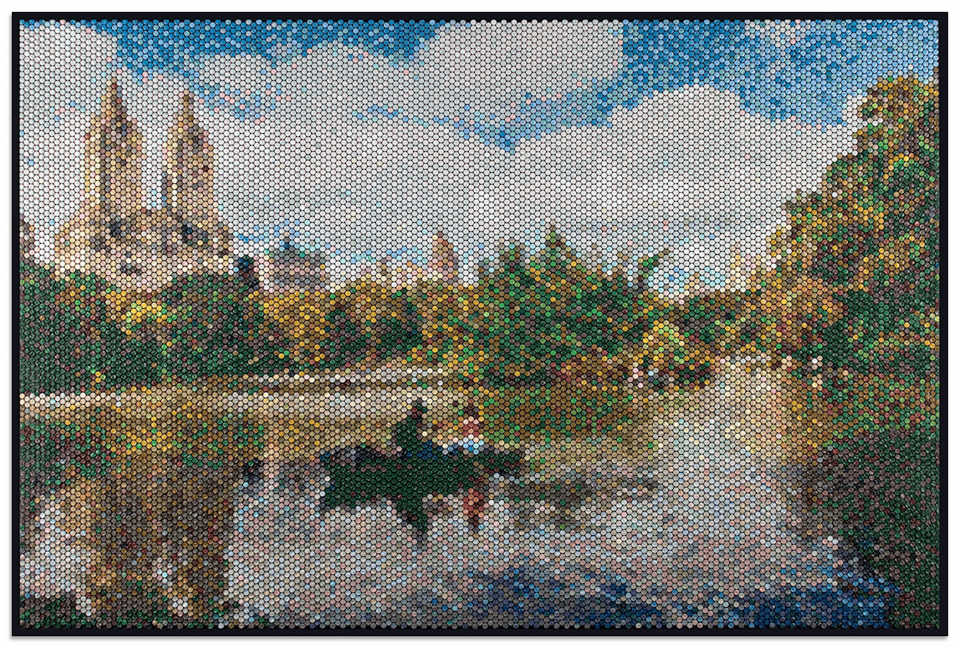
Bradley Hart is an artist who creates pointillist artwork by taking bubble wrap and injecting each bubble with paint.
Using paint-filled syringes, Hart painstakingly injects multicolored acrylics into the plastic wrapping’s air bubbles. This technique allows him to create reimagined historic artworks such as Georges Seurat’s “A Sunday Afternoon on the Island of La Grande Jatte” (1884–86), vivid landscapes, photorealistic renderings of celebrities, and self-portraits. The process can take anywhere from hours to weeks, given the meticulous nature of Hart’s practice: He preloads every syringe and numbers each individual bubble according to a corresponding chart.
The paint leaks out the tiny holes he makes the bubble wrap, so it creates a melted version of the painting; Hart also displays those. I gotta see this stuff up close some time!
2) 📷 Poetry camera
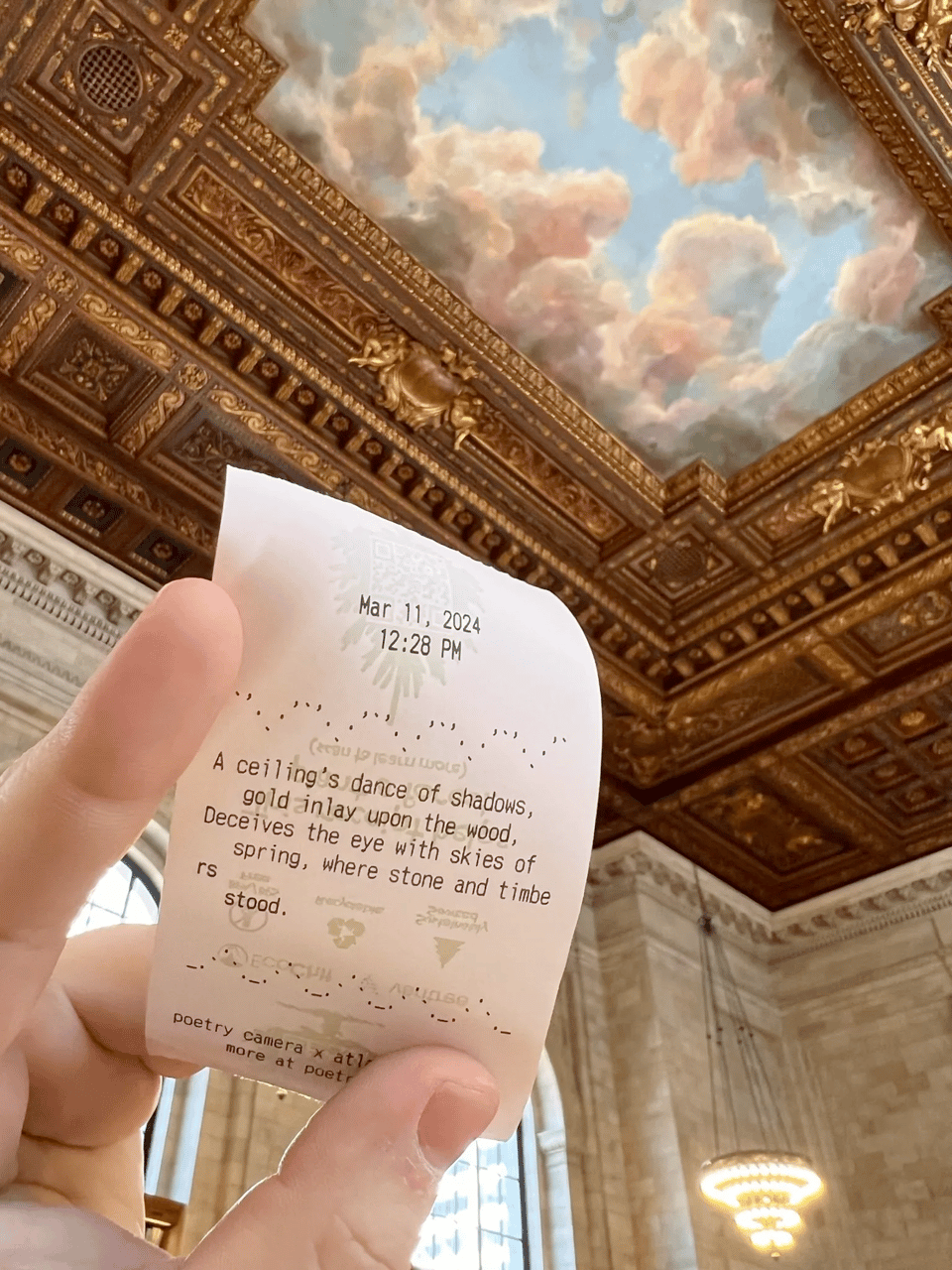
Kelin Carolyn Zhang and Ryan Mather have created the “Poetry Camera”: You snap a picture of something, it writes a poem about what it sees.
You never see the picture — just the poem.
Beneath the hood, it works like this: The camera a) snaps a pic, b) uses a vision-recognition algorithm to generate a textual string describing what’s in the scene, and then c) feeds that text-string to as a prompt to ChatGPT to write a poem.
Wittly, the camera doesn’t save a backup copy of the poem — so the only copy is the one you hold in your hands. (An ephemeral copy, too: Thermal-printer paper fades over time.)
As the creators told Techcrunch …
“We don’t save any of the images or the poems digitally. There are a few reasons for that: One, it’s easier. Two: privacy. Three, it adds extra meaning to the poems if they’re like these ephemeral sorts of artifacts. If you lose it, it’s gone,” Mather explains. “Everyone has a camera in their pocket through their cell phone now — we wanted to do something very different.”
Love it! You can see dozens of examples of the camera in action, via Zhang’s Tiktok feed here. If you want to buy one, they’re aiming to commercialize it, though it’ll take a while; in the meantime the build instructions are open-source, so you could build your own.
This isn’t the first poetry camera, actually. Back 2016 I met Ross Goodwin, a super-talented AI engineer who created word.camera, which did the same thing. Back then, deep-learning AI was still pretty new, and he didn’t have ChatGPT, so Goodwin trained his own poem-writing AI.
Check out the video of his camera in action. You can see that given the earlier, cruder state of linguistic AI back then, the poems are weirder, more awkward, and don’t rhyme. To my ears this makes them more evocative than the poems ChatGPT writes these days — which are almost too polished, if you know what I mean.
3) 🎥 The “Flipboard Experiment”
This spring, the folks at The Pudding did a cool experiment:
“Readers took turns tracing the previous person’s drawing to make a flipbook-style animation.” The result? A 22,454-frame animation.
It’s long, so I’d watch it at 2X speed with the sound off. For the first few minutes, it’s mostly a shapeless line — then abruptly it morphs into recognizable shapes like a bunny and a heart. It also, at a few moments, very briefly turns into a penis, which as the authors note is pretty much what you’d expect in an open-Internet environment.
Weirdly mesmerizing! Contributors tended most often to stick to the upper-left quadrant of the canvas, for reasons I cannot readily hypothesize.
4) ✏️ The 1963 “Symbolism Survey”

In 1963, the 16-year-old high-school student Bruce McAllister got annoyed at his English teacher — who insisted that authors intentionally put “symbolism” into their fiction, and the goal of the reader was to notice and decode it.
He thought this was a boring approach to reading (which is correct); he also doubted authors intentionally included symbolism.
To find out, he mimeographed a questionnaire and mailed it off to 150 well-known authors. Remarkably, 75 replied, including Ray Bradbury, Norman Mailer, Saul Bellow, and Ayn Rand.
The Paris Review has a great piece about it with scans of the letters. That’s Jack Kerouac’s above. Some of the replies:
The answers to the questionnaire were as varied as the writers themselves. Did Isaac Asimov plant symbolism in his work? “Consciously? Heavens, no! Unconsciously? How can one avoid it?” Iris Murdoch sagely advises that “there is much more symbolism in ordinary life than some critics seem to realize.” Ayn Rand wins the prize for concision; addressing McAllister’s example of symbolism in The Scarlet Letter, she wrote, “This is not a definition, it is not true—and, therefore, your questions do not make sense.” Kerouac is a close second; he writes, “Symbolism is alright in ‘Fiction’ but I tell true life stories simply about what happened to people I knew.”
5) 🐠 Winners of the underwater photography contest
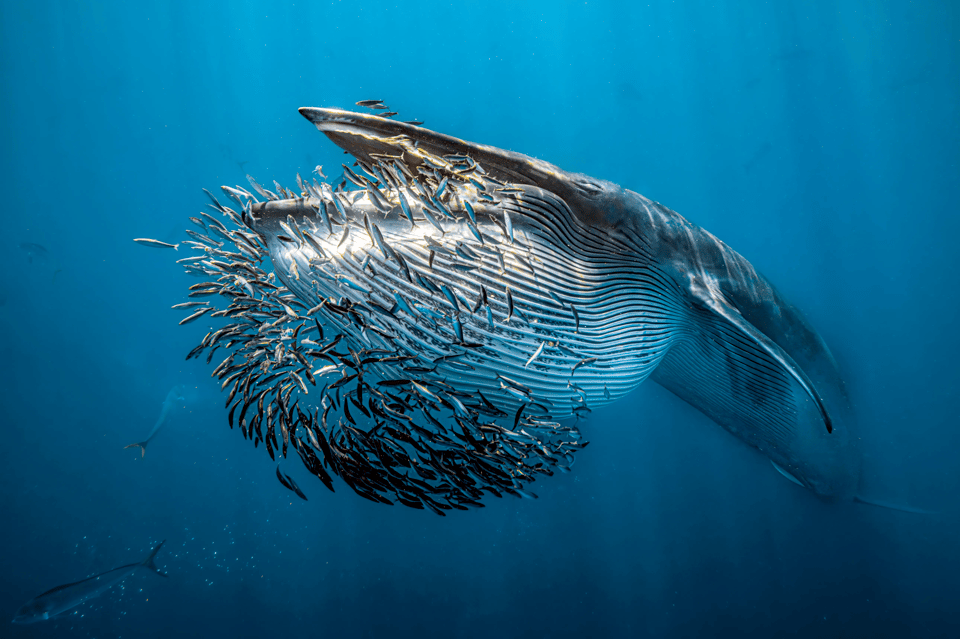
Here's a gallery of the winners of the annual Underwater Photographer of the Year contest -- they're all total bangers!
That pic above? It's by Rafael Fernandez Caballero, who describes this pic thusly ...
I was fortunate enough to experience this unique spectacle in the open Pacific waters in Magdalena Bay at the end of 2023. Due to the warmer water this year caused by the climate phenomenon “El Niño”, more species than ever joined this hunt. Bait balls of sardines attracted a variety of predators, but the main stars of the show, visiting Baja in perhaps larger numbers than ever, were the Bryde's whales. They patrolled the waters, searching for bait balls to get their bellies full of hundreds of kilograms of fish. This photo shows the very moment of attack, with the whale’s ventral pleats wide open and filtering the prey from the water using their baleens after engulfing hundreds of kilograms of sardines in one bite — simply unforgettable.
Check out the web site for the contest -- in addition to showing the pictures, they have video of the photographers describing how they got their pic.
6) 🧱 Lego AI build-generator
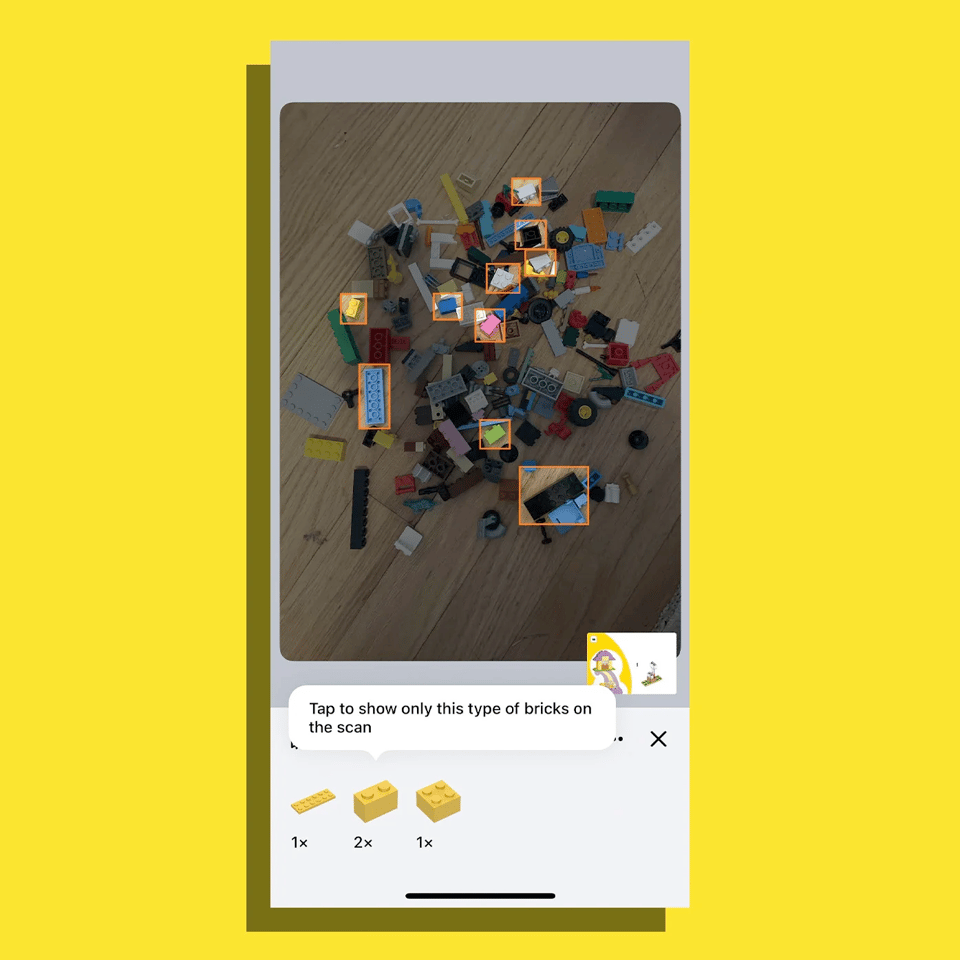
Behold Brickit, a free mobile app that lets you dump all your Legos onto the ground — then you snap a picture of ‘em all, it autorecognizes each piece, and suggests things you could build.
Holy crap I wish I’d had this around when I was a nerdy kid in the 70s!
7) ⏰️ NASA is making a time zone for the moon

The moon is hot again — with governments landing probes near the ice-rich south poles, and for-profit firms pondering the commercial value of our planet’s biggest satellite.
But it turns out that time runs slightly faster on the moon than it does on Earth, due to its reduced gravity and speed relative to our planet.
So NASA is assembling a task force to figure out a time zone for the moon. From their press release:
Due to general and special relativity, the length of a second defined on Earth will appear distorted to an observer under different gravitational conditions, or to an observer moving at a high relative velocity. For example, to an observer on the Moon, an Earth-based clock will appear to lose on average 58.7 microseconds per Earth-day with additional periodic variations. This holds important implications for developing standards and capabilities for operating on or around the Moon.
Additionally, the navigation accuracy a system can achieve with signals from multiple space- based assets, such as a person navigating on Earth with signals from Global Positioning System satellites, depends on the synchronization of those assets with each other. At the Moon, synchronizing each lunar asset with an Earth-based time standard is difficult — due to relativistic effects, events that appear simultaneous at the Earth (e.g., the start of a broadcast signal) are not simultaneous to an observer at the Moon.
By the way, if you want to know how this new phase of lunar exploration and exploitation is gonna unroll — it’s most likely going to be a weird new environmental morass. I wrote a big piece about it a few years ago for the New Republic.
8) 🔌 "Today's a great day for wind, energy's 50% off!"
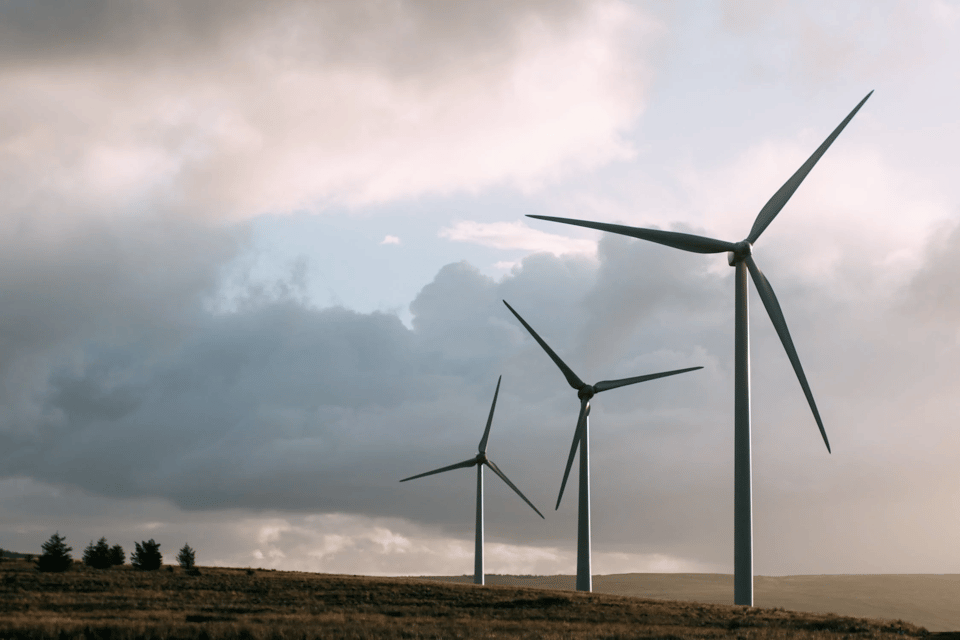
The Colorado Sun has a fascinating story about Holy Cross, an energy co-op that has built out a ton of wind and solar. It has so much that it's developing clever ways to manage the load -- by encouraging customers to hoover up super-cheap energy when sun and wind are plentiful, and vice versa.
As Micheal Booth writes, the co-op is going to be sending out messages to customers like this ...
“Today’s a great day for wind. We’re expecting a ton of it ... so between ten and two this afternoon when the sun is shining and the wind is blowing, we’ll give you 50% off" ... [snip]
The overall effect will be creating a “distributed storage” network for Holy Cross customers, where they can pay discounted rates to fill up their energy reservoirs in cars and home batteries with clean electricity.
It's a really interesting glimpse at the types of psychological gambits we'll be deploying -- or at least experimenting with -- as we transition to a renewably-powered grid.
Will they work? I don't know! Americans have been conditioned to very often not think about energy ... because, of course, we spent the last 150 years crapping oodles of externalized pollution into the sky; we stored our lack of concern, as it were, in the atmosphere. Whether Americans are, en masse, emotionally ready to think about their energy-use on a weekly basis (or daily basis) is an open question, I'd say. They may not.
On the other hand, saving a boatload of money is always something that gets people to snap to attention, lol. In the renewable transition, there will be a lot more carrot than stick. The energy can be really, really cheap! When I installed solar panels on my roof five years ago I discovered it reduced my electricity bills so dramatically it changed my entire relationship to energy, from one of privation to one of abundance -- with some truly delightful emotional side-effects, as I wrote for Wired.
9) 🎼 Why alt-rock bass players were so often women
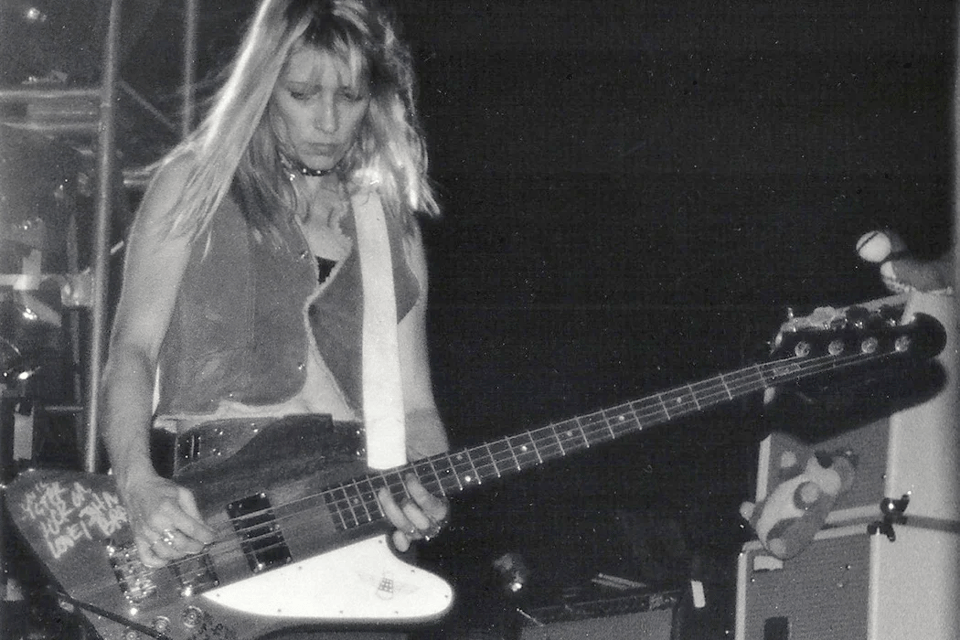
As bands formed in the post-punk alt-rock period of the 90s, the sociologist Mary Ann Clawson noticed something: A lot of the bass players were women. Frequently they’d be the only female member in the band, like Kim Gordon of Sonic Youth, Kim Deal of the Pixies, or Donna Dresch during her tenure in Dinosaur Jr. and Screaming Trees. What was going on?
Clawson started investigating this question, interviewing 43 women who played bass in the 90s. In 1999, she published a fascinating paper “When Women Play the Bass: Instrument Specialization and Gender Interpretation in Alternative Rock Music”. (It’s linked to in that JSTOR Daily article.)
Clawson discovered there were three main interlocking reasons women played bass so often. The first one is that guitar playing was already dominated by guys — it was the go-to instrument for men interested in existential peacocking. In contrast, there were never enough bass players; many bands were desperately hunting for one.
And this is where things get interesting! Clawson’s survey uncovered a fascinating third bit of data: Women were also more likely to begin playing an instrument later in life. As Clawson found, men in alt-rock started playing guitar on average at age 13, and joined their first band at age 15.3. Women, in contrast, began playing on average at age 19, and joined their first band at age 21.
So these women gravitated to the bass because it is, compared to the guitar, a bit easier to learn quickly. It’s hard to master; but you can get started faster. So as Clawson found …
Aspiring women rock musicians are thus often denied the years of teenage apprenticeship and skill acquisition experienced by male counterparts. Given this, the appeal of the bass as a quickly learned instrument is understandable. Sarah Johnson, a woman bassist, made explicit reference to this dynamic: "You can quickly sound OK," she noted, "so women who didn't have guitars given to them at 12, are impatient and wanted to be in a band, to not be laughed at, can learn in six months."
It’s an academic paper, but quite nicely written — check out the whole thing.
10) 🧂 Salt as "the second soul"

Anton Howes runs a phenomenal newsletter called "Age of Invention", which focuses on tales of the industrial revolution in Europe. One of his latest editions is an absolute banger, and is devoted to ...
... salt! As readers of Mark Kurlansky's microhistory Salt would know, salt was a commodity so crucial that it helped etch the fractal edges of state power: The contours of the Roman empire, early Italy, France and Britain can all be understood significantly through their control of salt.
You ought to read Howes' entire essay -- it's a delight. One key point he makes is that salt was crucial partly because food was so crucial to premodern life: Since the vast majority of people worked in agriculture, and since salt made food tastier (and preserved it), the presence or absence of salt had an inordinately huge impact on early national economies. Its key role in preserving meats made it known as "a second soul".
One of my favorite passages, though, is where Howe talks about the key role that salt has in the human body. Our body needs to have a ratio of salt to water, and we lose salt through sweating; to restore the balance the body sweats even more. So providing people with enough salt was key to maintaining a productive workforce:
A population deprived of salt was thus one that was weaker and more prone to disease — and at a time when the vast majority of the economy’s energy supply came from the straining of muscle, both human and animal, that weakness in effect meant a severe energy shortage. Although the main fuels for muscle power were carb-heavy grains like wheat, rye, oats, and rice, the indispensable ingredient to getting the most out of these grains was salt — just as how nuclear power uses uranium as its fuel, but also requires a suitable neutron moderator. A population deprived of salt would quite literally be more lethargic and sluggish, making it less productive and poorer too.
BTW, every single issue of Howes' newsletter is as good as this one. I'd seriously recommend subscribing.
11) 🐍 Why pythons are a low-carbon-emissions food
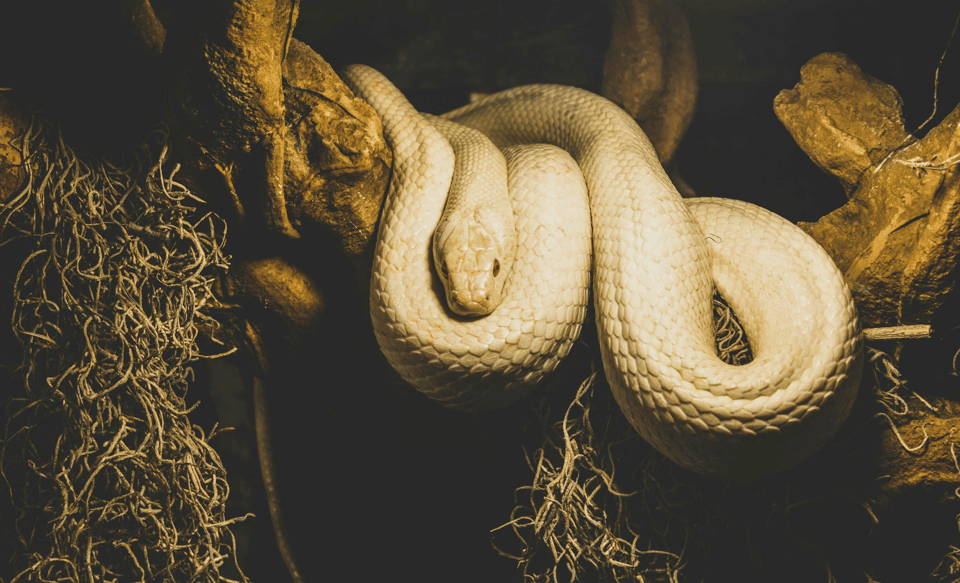
Have you ever had python meat? According to snake expert -- or, herpetologist -- Dan Natusch, it's "pretty tasty and versatile".
Pythons also are curiously efficient animals to farm. That's because snakes are ectotherms: They're cold-blooded. That means pythons convert their own food into body mass very efficiently. They're not using any calories to heat themselves up; to do that, they just lie in the sun. (In a sense, snakes are little solar arrays.) Whatever they eat they plough mostly into the business of getting bigger.
The upshot, as any python farmer will tell you, is that pythons grow very quickly.
And this fact made Natusch think: Huh, maybe pythons would make the perfect superfood for an era of climate-change adaptation!
So he and a team of researchers crunched the numbers on python farming. In a recent paper, argued that -- yep -- the farming of pythons produces far fewer emissions than the other animals we're currently eating:
Production efficiencies for pythons were higher than those reported for poultry, pork, beef, salmon, and crickets. This remarkable outcome reflects the synergistic effects of ectothermic physiology, sessile behaviour, efficient digestive physiology, and economic serpentine morphology (e.g., no legs or wings ~ higher edible carcass ratio). High assimilation efficiencies also translate into low volumes of faeces, and the nitrogenous wastes that pythons produce are excreted as water-insoluble urates rather than more volatile urea. Python farms, therefore, produce fewer greenhouse gasses (CO2, methane and nitrous oxide) than do endothermic livestock systems.
Better yet, pythons survive long periods of starvation astonishingly well. They found pythons that didn't eat for months yet lost very little body mass -- and when food was available again, quickly regained their weight. That, as Natusch notes, makes pythons even better suited to a warming globe, since the spiky and irregular weather that attends upon climate change is likely to produce interruptions in the supply chain for industrial farms.
Plenty of questions remain; Natusch and his peers note that really huge, planet-feeding python farms could have scale problems. But it's worth looking at.
12) ♻️ A final, sudden-death round of reading material
Nope, nope, nope, nope, nope. ♻️ The Kyles vs the Evans. ♻️ "The wifi only works when it's raining." ♻️ Truly nutty RC helicopter antics. ♻️ 1774's "Society for the Recovery of Persons Apparently Drowned". ♻️ The ancient origins of “hey diddle diddle“. ♻️ “Is the Sun conscious?” ♻️ America's last morse-code station. ♻️ More and more humans are growing an extra atery. ♻️ Harvesting energy from subway riders passing through turnstiles. ♻️ OCR your PDFs and images privately in your browser. ♻️ Amazing list of open-source alternatives to commercial software. ♻️ NYC public-transit glitch art. ♻️ The poetics of large language models. ♻️ The SAT question everyone got wrong. ♻️ The “Roll-Invert-Unroll” technique for replacing duvet covers. ♻️ How to make wine from Mountain Dew. ♻️ Why American hockey players talk like Canadians. ♻️ An installation that plays "Africa", on infinite repeat, in Africa. ♻️ Extremely mundane places, replicated in Minecraft. ♻️ A paper on "botshit". ♻️ The evolution of nails. ♻️ A surgeon who engraved his initials on patients' organs. ♻️ A computer in every kitchen. ♻️ How Kurt Russell destroyed a $40,000 guitar during a Quentin Tarantino shoot. ♻️ "Moonlight", an online platform for tarot reading. ♻️ A 1,600-year-old stone with Irish “ogham” script. ♻️ Printing music with CSS grid. ♻️ Conway’s Game of Life in 3D. ♻️ LLMs considered as ouija boards. ♻️ The disastrous “roller ship”. ♻️ A new way to count.
CODA ON SOURCING: I read a ton of blogs and sites every week to find the material for the Linkfest. Two of those I used for several entries this week are Matthew Ingram's terrific "When The Going Gets Weird" and Taylor Kate Brown's The Planet You Save May Be Your Own -- go check them out!